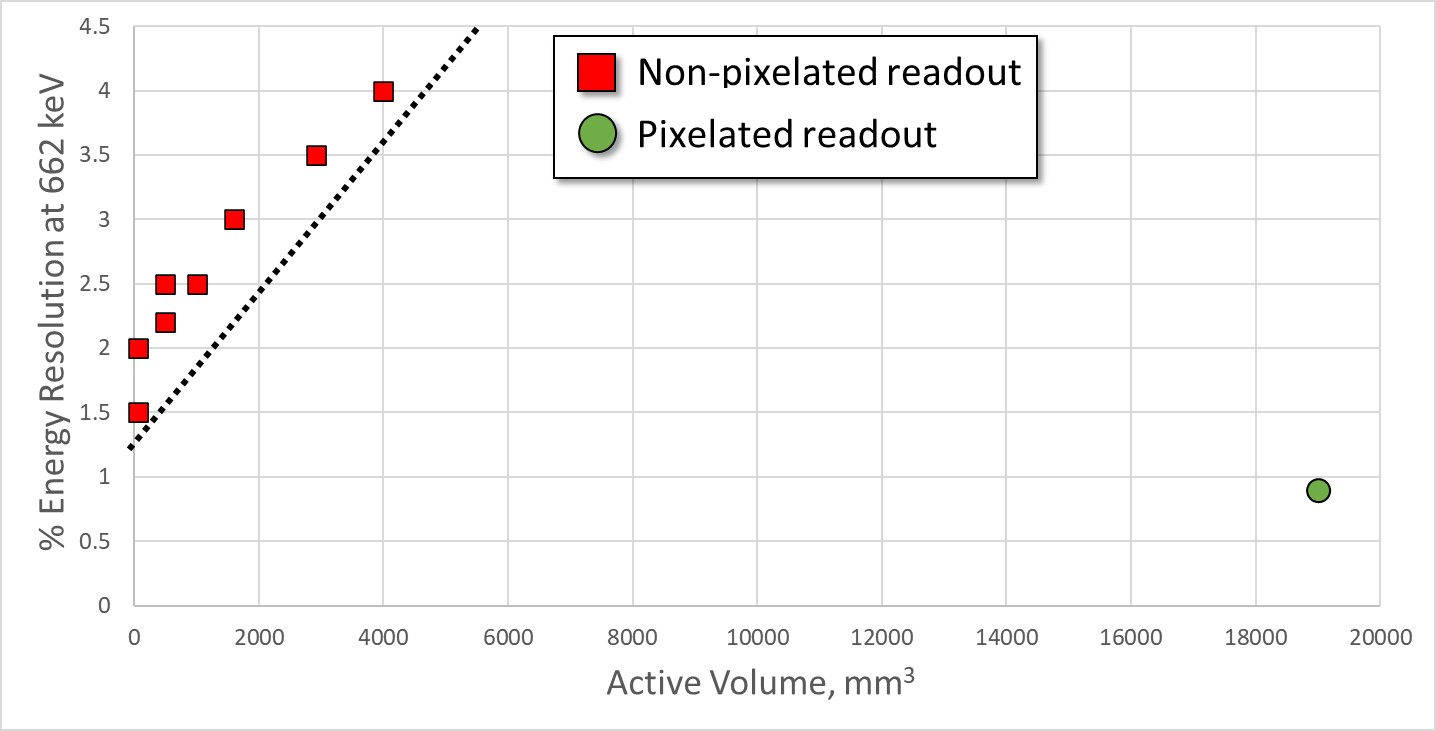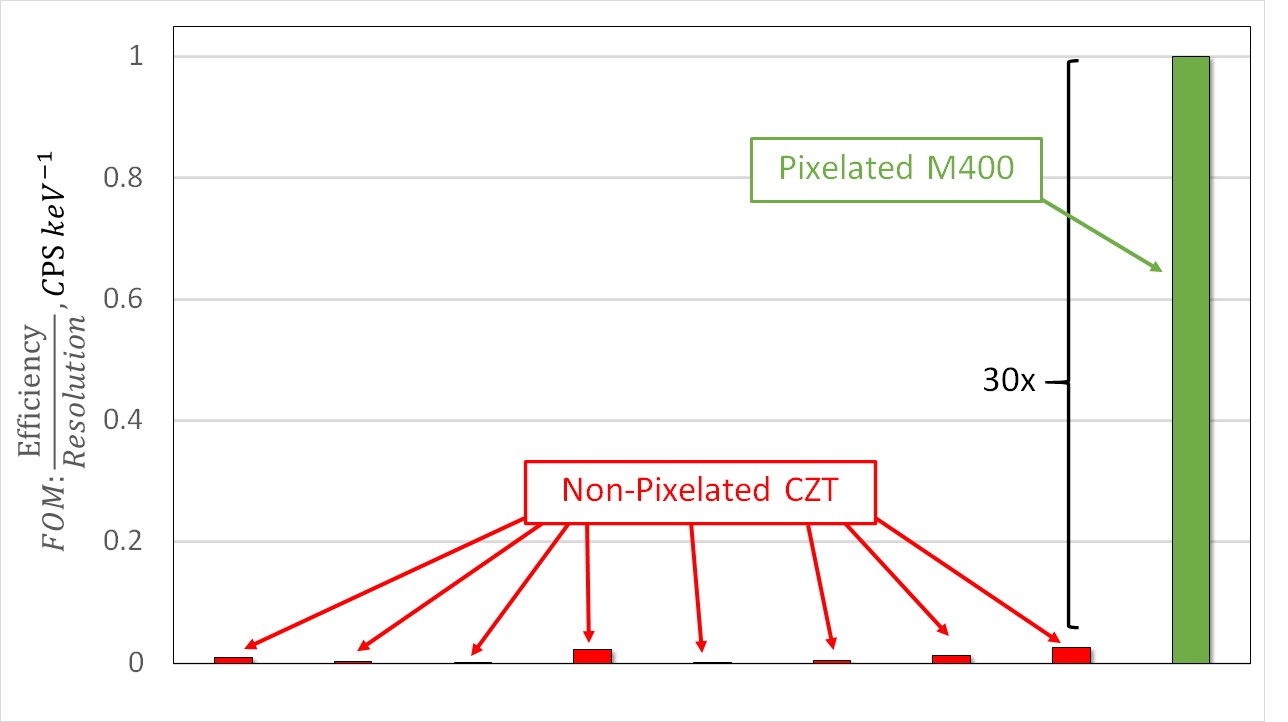Selecting a Plug-and-Play CZT Gamma-Ray Spectrometer
Not all plug-and-play Cadmium Zinc Telluride (CdZnTe) spectrometers are equivalent.
System active volume, the cumulative size of CdZnTe crystals used to detect photons, can vary by over 2 orders of magnitude between vendors!
Active volume is generally proportional to system efficiency, meaning that larger systems can complete measurements in a shorter amount of time.
System energy resolution, a measure of how sharp peaks in spectra are, can vary by a factor of four. Better energy resolution means that isotopic peaks
are taller over background, increasing system minimum detectable activities.
A comparison of the active volume and energy resolution of common plug-and-play
CdZnTe spectrometers is shown below. Note that most CdZnTe systems exhibit a fundamental tradeoff between energy resolution and active volume. This stems from
CdZnTe material inhomogeneity. In contrast, pixelated CZT systems like those from H3D, Inc. exhibit no such tradeoff as material nonuniformity is calibrated
out. The effects of both energy resolution and active volume, which is generally proportional to efficiency, can be combined into a single figure-of-merit (FOM).
An ideal CdZnTe gamma-ray spectrometer would be both efficient and provide good energy resolution. As such, a first-order FOM is efficiency divided by energy
resolution. This first-order FOM is plotted below. Clearly, the H3D, Inc. M400 comes out on top, providing both best-in-class active volume and energy resolution.


The H3D M400 is a custom integrable CZT detector module. It contains the most advanced room-temperature semiconductor technology, achieving spectroscopic
performance competitive with cryogenically cooled detectors in a compact 1.3-pound package. The M series has a wide variety of options to fit custom application
requirements. Options include high-resolution, low- or extra high-efficiency, radiation imaging, and combined radiation/optical imaging options. With
fast startup, compact size, and industry-leading efficiency and energy resolution, the M series is perfect for integration with unmanned drone or robot systems,
medical imaging arrays, or other sensor suites.
Drone-based measurements complicate the simple FOM used above. Drone measurements require light spectrometers given payload constraints.
As such, total spectrometer weight must be considered. An updated FOM, dividing efficiency by the product of resolution and spectrometer mass,
is plotted below. The H3D, Inc. M400 provides the most resolution-weighted efficiency per gram out of any CdZnTe spectrometer, making it ideal for
drone-based measurements. Checkout more about the M400 here.

Contact H3D or Dr. David Goodman (dgoodman@h3dgamma.com) directly for more information about CdZnTe-based gamma-ray spectroscopy.
Signup to receive future updates about H3D and our products here.